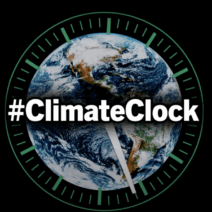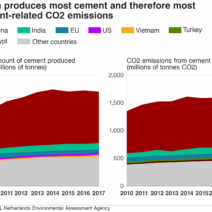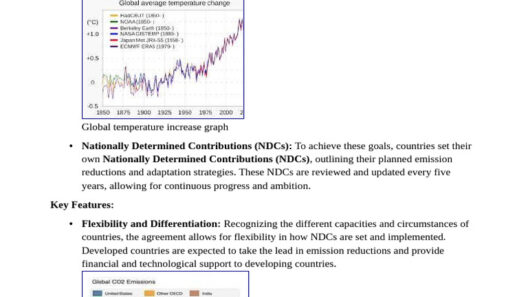Climate change, an existential plight of our era, demands an unwavering response. Though it presents monumental challenges, the solutions are multifaceted and accessible. Mobilizing technology, policy changes, and public engagement are pivotal in constructing a sustainable future. This piece endeavors to dissect the various strategies that can collaboratively manifest a comprehensive solution to climate change.
Beyond political discourse and scientific debate, actionable solutions lie within reach. Adopting innovative practices, reinforcing community resilience, and implementing strategic policies are integral to circumventing the detrimental trajectory set by climate change.
embracing renewable energy is paramount.
Harnessing Renewable Energy: The Backbone of Sustainability
Transitioning from fossil fuels to renewable energy sources, such as solar, wind, and hydropower, is perhaps the most pivotal step in addressing climate change. Fossil fuels are the primary culprits behind greenhouse gas emissions, which trap heat in the atmosphere and disrupt the climate balance. Fortunately, advancements in energy technology have rendered renewables not just viable but indispensable.
Solar power, for example, has reached unprecedented levels of efficiency and affordability. With the ability to convert sunlight directly into energy, solar panels can be integrated into residential, commercial, and industrial infrastructures. Wind energy, meanwhile, has become a formidable contender in energy generation, with expansive wind farms capturing kinetic energy and converting it into electricity. These technologies not only reduce dependence on fossil fuels but also create jobs and stimulate local economies.
The drive towards renewables should be complemented by energy efficiency initiatives. By incentivizing energy-efficient appliances, retrofitting buildings, and encouraging sustainable practices, we can mitigate energy consumption considerably. Smart grids and decentralized energy systems foster a cooperative energy generation model that promotes community engagement and resource sharing, further bolstering the transition to renewable sources.
elevating conservation efforts and ecosystem restoration.
Conservation and Restoration: Nature’s Role in Mitigating Climate Change
To effectively combat climate change, it’s crucial to recognize and embrace the natural world’s inherent capabilities. Preserving existing ecosystems and enhancing biodiversity serve as foundational strategies in carbon sequestration and ecological resilience. Protecting forests—the planet’s lungs—remains a priority. Forests absorb significant amounts of carbon dioxide, thus playing a critical role in climate regulation. Implementing policies to safeguard these vital habitats from deforestation is essential.
Furthermore, restoring degraded ecosystems accelerates the absorption of atmospheric carbon. Initiatives such as reforestation, wetland restoration, and regenerative agriculture can bolster carbon sinks. For instance, organic farming practices that eschew harmful pesticides and fertilizers not only improve soil health but also enhance its capability to store carbon. Sustainable farming practices can mitigate emissions from the agricultural sector, which is one of the largest contributors to greenhouse gases.
Recognizing indigenous knowledge and empowering marginalized communities in conservation efforts is also critical. Engaging local populations in ecosystem management ensures that these strategies are culturally relevant and effective. With the right support, communities can be at the forefront of ecological restoration efforts, creating a symbiotic relationship between human well-being and environmental health.
enhancing policies that support sustainable development.
Policy Framework: The Crucial Role of Governance
Effective governance and robust policy frameworks are indispensable in the assault against climate change. Policies should foster innovation, incentivize sustainable practices, and create regulations that diminish greenhouse gas emissions. Implementing carbon pricing mechanisms—such as carbon taxes or cap-and-trade systems—encourages industries to adopt greener practices by making polluting activities financially unfeasible.
Additionally, government subsidies for clean energy projects can catalyze private investment, ultimately accelerating the transition to a sustainable economy. Strategic public-private partnerships can yield innovative solutions, combining resources to tackle climate-related challenges. International cooperation and participation in climate accords, like the Paris Agreement, are essential for coordinating global action against climate change.
Furthermore, educational initiatives that disseminate information on climate change are vital. Empowering citizens with knowledge fosters grassroots movements that can influence policies and demand accountability from governmental entities and corporations alike. When individuals understand the implications of climate change, they are more likely to engage in behaviors that support sustainability.
fostering community engagement and individual responsibility.
Community Engagement: A Collective Responsibility
Ultimately, the solutions to climate change must resonate at the community level. Engagement and collective action can catalyze significant environmental change. Grassroots organizations, non-profits, and local coalitions are the driving forces behind climate action. They inspire individuals to adopt sustainable practices, such as reducing water usage, composting, and minimizing single-use plastics.
Even modest efforts can significantly reduce an individual’s carbon footprint. Transitioning to a plant-based diet, employing public transportation, and advocating for local sustainability initiatives are all meaningful contributions. Communities can foster a culture of sustainability through workshops, educational programs, and local events that raise awareness and encourage collective action.
Moreover, collaboration among diverse stakeholder groups—businesses, governments, and citizens—will be pivotal in implementing long-term, sustainable solutions. When all sectors unite with a common purpose, innovative solutions emerge, propelling collective progress towards combating climate change.
Conclusion: A Call to Action
Addressing climate change is an intricate process that necessitates collaborative endeavors. By adopting renewable energy, conserving ecosystems, crafting effective policies, and promoting community engagement, we have the capacity to navigate this complex issue. Every individual, community, and country has a role to play, and in concerted effort lies the power to achieve meaningful change. Ultimately, a sustainable future is not merely a possibility—it is an imperative. Act now, for the health of our planet and future generations depends on it.







